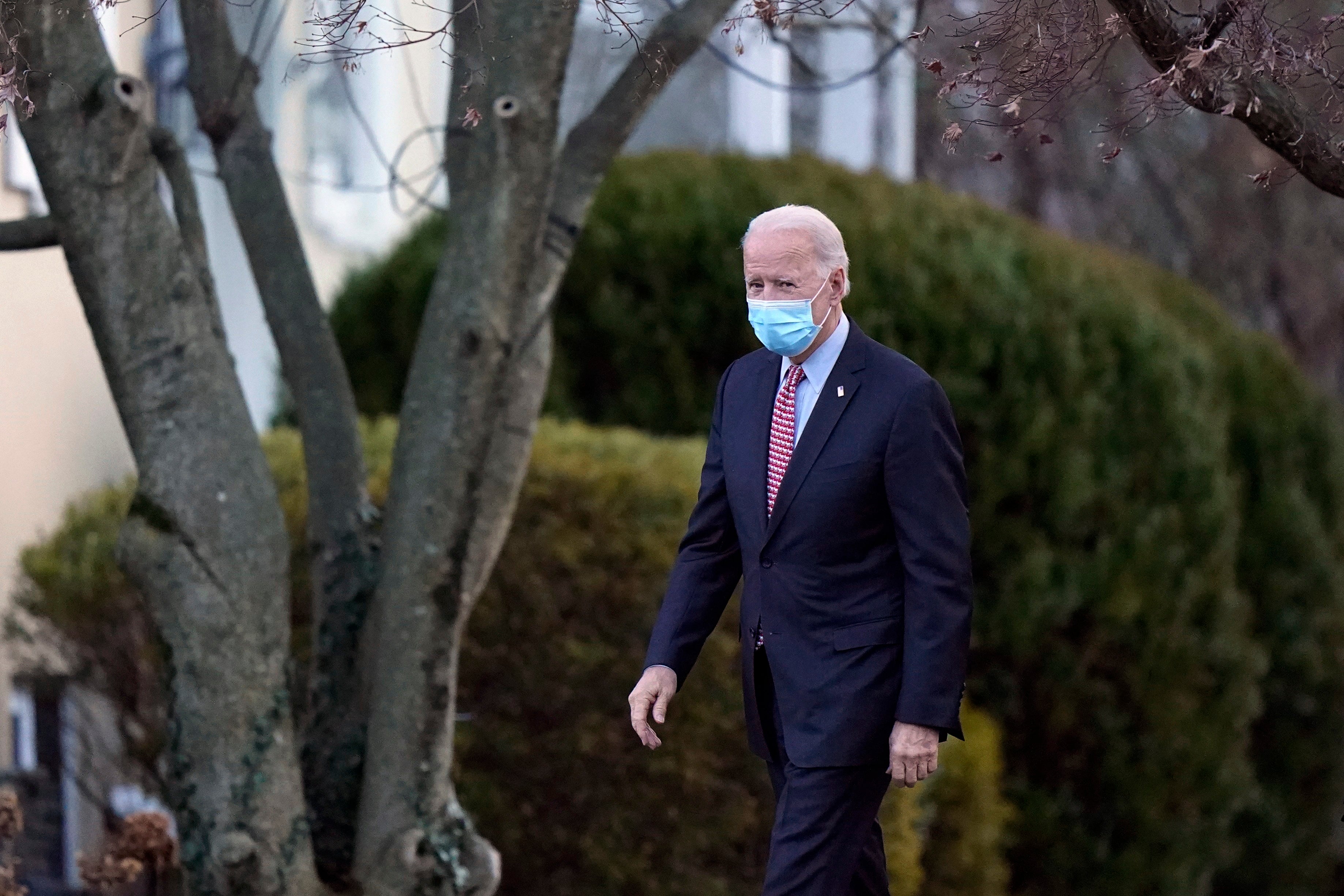Inflation may be on the way – but too much will cause problems
What we do know is that 2 per cent would be welcome, and 3 per cent acceptable. But 4 per cent and above would be tricky, writes Hamish McRae


Joe Biden’s American Rescue Plan is massive – and massively welcome. That is not a political judgement; it is an economic one.
Look at the numbers. The fiscal injection is $1.9 trillion. The US economy, after the hit from Covid-19, will be about $20 trillion. So it is equivalent to 10 per cent of GDP. Add in the $935bn passed by Congress last month and you’re up to 15 per cent of GDP.
A boost on that scale should be enough to tide things over until the vaccine rollout – which is chaotic but is happening quite briskly – cuts the death toll and enables the economy to reopen fully. It is plausible that the US will lead the developed world out of this recession, as it did after the one that followed the financial crash of 2008.
If this is right then it is very good news, not just for the US but for the world economy as a whole. We need to get out of this as fast as we can. However, there are costs to every action and borrowing on this scale leads to two obvious sets of questions. One is how, when and if this money will be paid back. The other is what it does to inflation and interest rates.
The first has been widely discussed, but for practical reasons is on the back-burner. Once the economy is growing again the US, and indeed the rest of us, will have a better feeling for the scale of the problem. It is a huge issue, but more likely for next year, not this one.
Questions about inflation and interest rates look like coming through faster. Asset inflation is already there. Bitcoin at $35,000 (£25,800)? The Dow around 31,000? US home prices up 7.5 per cent in the past year, and Zillow projecting they will rise by another 10.3 per cent in 2021?
But asset inflation has not as yet fed through into current inflation, the price of goods and services. In the year to December, the US consumer price index was up 1.4 per cent – well below the Federal Reserve target of 2 per cent, a target that the Fed has said it is prepared to be relaxed about in the short term. But inflation may be on the way. That December figure included a jump of 8 per cent in petrol prices, reflecting the recovery in the oil price. Brent is around $55 a barrel, and last week Goldman Sachs forecast that it would go to $65 a barrel this year.
Commodity prices are also climbing. Last November Lloyd Blankfein, former chief executive of Goldman Sachs, said he thought it might not be a bad thing to invest in commodities. Since then other banks, including J P Morgan Chase and Bank of America, have also made the call. The copper price on the London Metal Exchange was just under $8,000 a tonne on Friday, close to the eight-year high it hit a few days earlier.
Raw material and energy prices are not quite as important in setting general inflation as they were 15 or more years ago, but they remain the start of the value chain. Climbing prices set in motion a whole string of cost increases that eventually feed through into higher prices all round.
So how high will inflation go? That depends on something else: what will happen to the costs of the vast range of service industries?
This is hard to predict. You can calculate what a rise in, say, copper prices does to the cost of manufacturing an electric motor because you know how much copper is needed to make it. It is much harder to calculate how much, for example, air fares will go up when we are allowed to fly again.
While some of the costs, such as aviation fuel, are easy to see, the price of the airline seat will be determined more by supply and demand, at least in the short term. We know the airlines will be desperate to recoup their losses, and we know some have gone under. So they will charge whatever they can get away with.
The same applies to the entire hospitality industry. Do we want to go on a holiday? Probably yes, but the hotels will have to make up for a lost year. Restaurants and bars will have to charge more or go under. And if they have to maintain restrictions on numbers, then the people who go out to a bar or a show will have to cover the overheads for the people who are no longer allowed to be there.
So by how much will inflation rise? We cannot know because we have no data to go on. There is zero previous experience of this from earlier recessionary cycles, for we have never forced huge swathes of the economy to shut down. What we do know is that 2 per cent would be welcome, and 3 per cent acceptable. But 4 per cent would be tricky and 5 per cent would surely force action from the Fed.
That action would have to be some rise in interest rates. In anticipation of that, some money and bond market rates have started to climb already.
The Fed will be desperate to keep the money taps open, and it probably will through most of this year. But the stronger the recovery the more likely it will be that inflation returns. We want a little inflation, not too much. But whether this Goldilocks situation persists… well, fingers crossed.




Join our commenting forum
Join thought-provoking conversations, follow other Independent readers and see their replies
Comments